 |
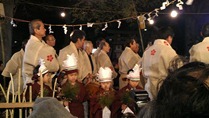 |
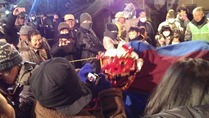 |
As matsuri go, Ta’Asobi (“Rice field play”) has a pretty good history – about 1,000 years. Japan, like other Asian nations, is celebrating the lunar new year at the moment, and that also represents the beginning of planting season (if you recall, Setsubun is actually the first day of Spring in the lunisolar calendar).
As with many other elements of Japanese culture, especially where Shinto is concerned, I’m sadly unable to grasp the meaning of much of what I saw at the Ta’Asobi festival at Kitano Jinja in Itabashi-ku, near Tokyo. As with all Ta’Asobi rites it basically involves acting out the entire growing season from start to finish. There are also taiko drums, lion dancers and various animal costumes, as well as a man dressed as what I’m pretty sure was a pregnant woman, and what might just have been the Shinto version of the Baby New Year.
What’s special about the Ta’Asobi at Kitano Jinja is that it’s one of only two such festivals in Japan (the other is at nearby Suwa Jinja tonight) that’s considered to be virtually unchanged from the ones performed a millennia ago. As such these two matsuri have been classed as National Intangible Cultural Assets by the Japanese government.
It was a fascinating spectacle to watch play out – by the time things were in full swing there were a couple hundred spectators, and the whole thing was being filmed for television (and I was definitely the only Gaijin there). It was fiercely cold with a powerful wind (as you’ll see and hear in the videos) and there were a couple of large bonfires being tended by the Tokyo Fire Department (first garbage, then wood). I absolutely reeked of smoke by the end of the night, but I couldn’t resist getting close to those fires when the cold really overcame me.
Perhaps the most interesting element of the ritual was when a group of young boys of perhaps five or six (young boys are a part of every Ta’Asobi ceremony it seems) were brought out in their own costumes, and jointed the adult men on stage where they huddled around a small fire that had been set up for their benefit. After a few moments they were brought into the circle and then, one by one, tossed into the air by the men as they chanted. I felt pretty sorry for those kids, who looked even more miserably cold than I felt, but they did seem to enjoy that part.
The festivities closed with a procession of dancers dressed as fierce creatures, followed by the “pregnant” man in a mask. After that there was applause, then sake (in that order). Another year, another growing season begins.
 |
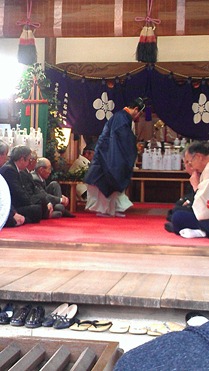 |
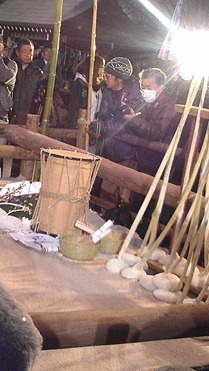 |
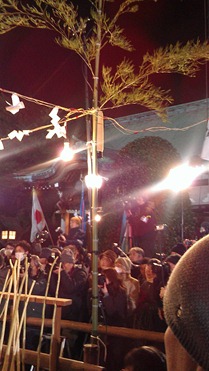 |
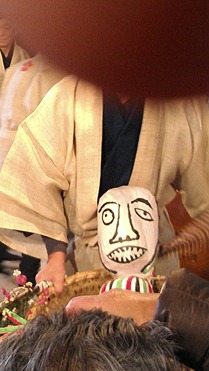 |
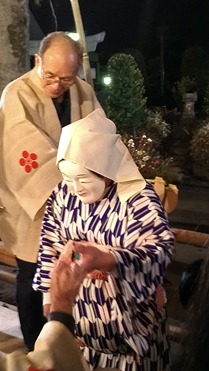 |
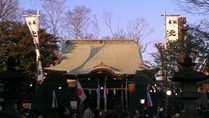 |
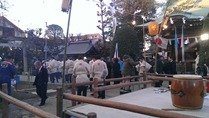 |
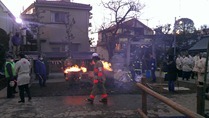 |
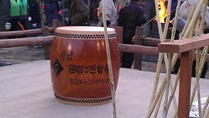 |
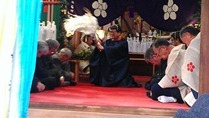 |
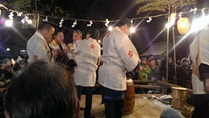 |
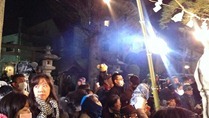 |
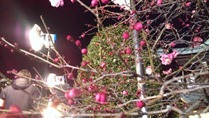 |
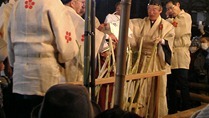 |
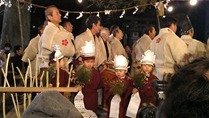 |
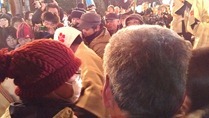 |
 |


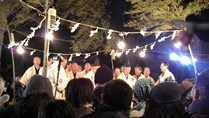

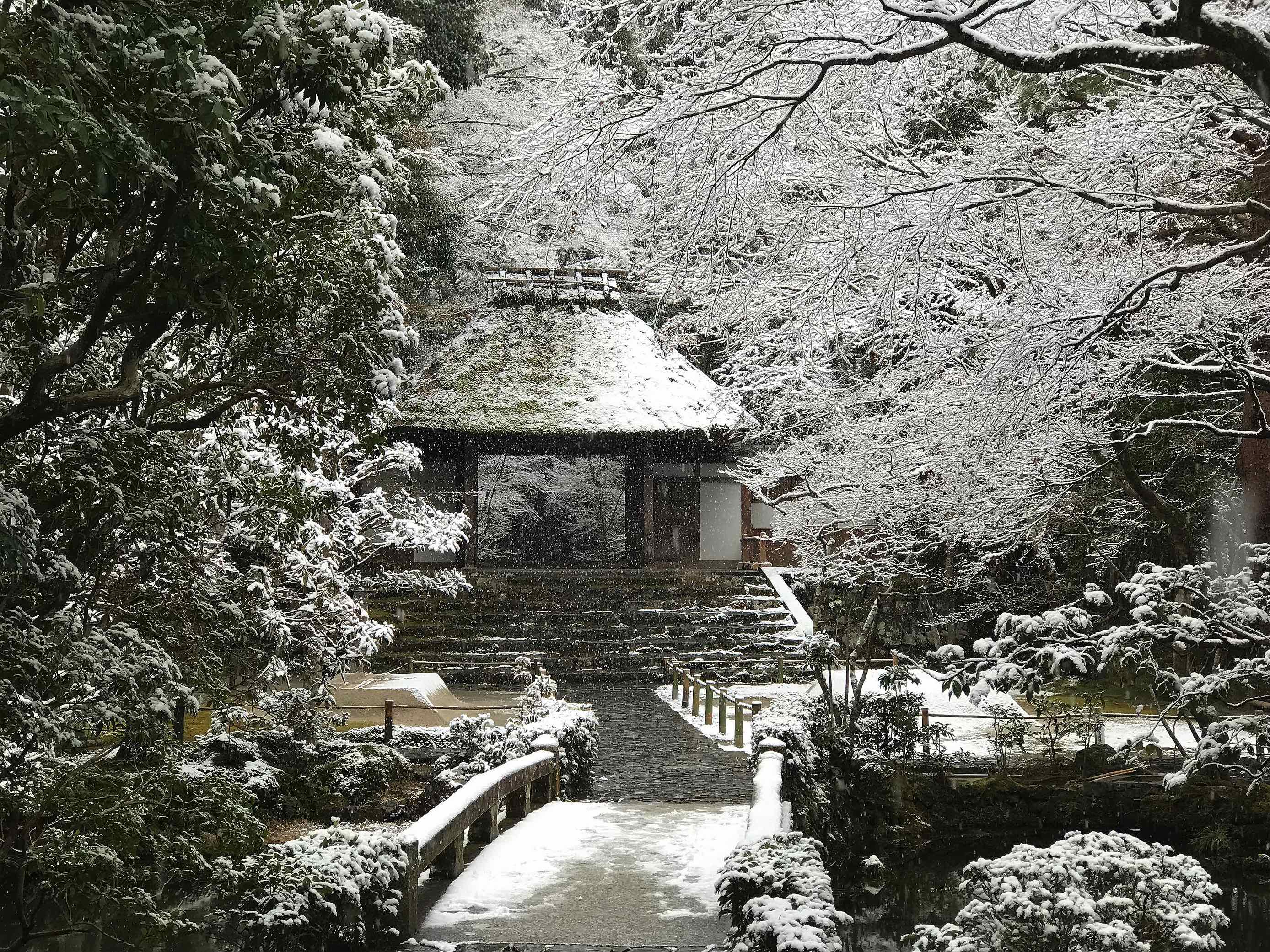
elianthos
February 13, 2013 at 2:09 pm*applause* endurance test for you given the climate, much? Did the public partake in the sake at the end? ^^
Thank you once more for the fascinating glimpses of Japanese folklore.
And are those plum blossoms?
elianthos
February 13, 2013 at 2:11 pmP.S.: I'm getting Frazer vibes.
elianthos
February 13, 2013 at 3:02 pmP.P.S.: the pregnant woman must be Yasume 🙂 http://nirc.nanzan-u.ac.jp/nfile/1005 (page 120 [30 out of 50 in the pdf file] , line #2)
admin
February 14, 2013 at 2:19 amNever say no to warm sake on a cold night. Or any night.
admin
February 14, 2013 at 2:22 amIncidentally, the shrine they talk about in that article is the one that held the Ta'Asobi last night, the other one that's nationally recognized. The area around Narimasu is the origin of this rite, it seems.
elianthos
February 14, 2013 at 10:24 am*mental images of Enzo sipping a cup while gazing at the moon and cracking haiku*
—
Incidentally, the shrine location was one of the reasons that made me think the article could be relevant. About the specific meaning of Yasume (quite self-explanatory in contest but still it's nice when I get some seemingly matching extra clues ): http://worldkigo2005.blogspot.it/2005/06/fields-paddies-ta.html (Kigo For Winter section) 'yasumeta 休め田(やすめた)"paddy taking a rest" 😀
Joshua Tan
February 14, 2013 at 3:47 amIn case anyone is wondering. The reason for the new year starting in Spring is this:
Similar to how the Gregorian calendar's October (8) and September (7) became the 10th and 9th month respectively. Winter is not counted in the month counting. Thus Spring to Autumn is considered one year. Look at China's Spring Autumn Annals that dictates the chronological events of the country and high court.
This is why Spring starts the year.
elianthos
February 14, 2013 at 10:55 amInteresting. Thank you :).
Even within the Gregorian calendar we had for centuries different year-starting days in different places of Europe, tying into the two pivotal Christian festivities and/or overlapping with earlier pagan customs/calendars.
So the year in some European realms and cities could start on
1) December 25th/Christmas ( former Sol Invictus [Undefeated Sun] celebration, basically around Winter sostice),
2) March 25th (around Spring equinox), or on
3) Easter/Resurrection day (this one is still based on a lunar calendar so the date changes every year. But it still falls between March and April – on the first full Moon after the vernal equinox – and as such retains Spring/life renewal undertones ).